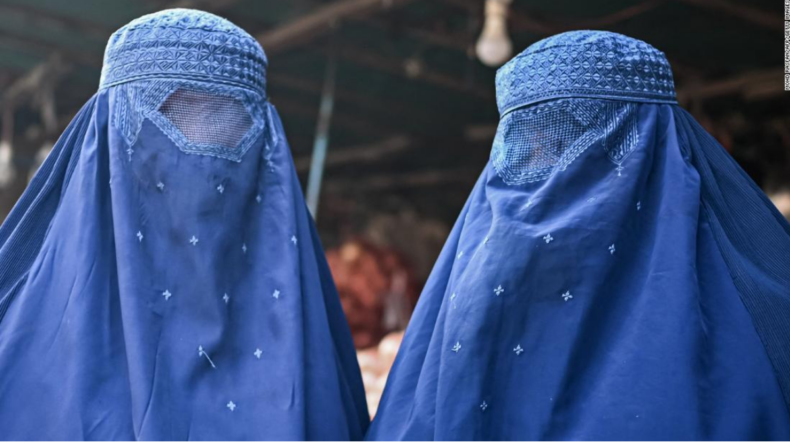Since the Taliban came to power in August 2021, Afghan women are facing harsh restrictions questioning the militant group that promised “amnesty for all”. The country has rolled back the gains it had made since the invasion of the US.
Highlights:
- Muslim women who don’t cover full bodies are “trying to look like animals”
- “Amnesty for all”- but the Taliban is responsible for most violence.
- Food prices soar amid a looming economic crisis.
The Taliban’s religious police put up posters across the city of Kandahar in Southern Afghanistan stating that Muslim women who don’t wear a hijab to cover full bodies are “trying to look like animals”. Orders were passed to cover themselves completely including their faces, when they go out in public. Earlier in May, Taliban chief Hibatullah Akhundzada approved a directive stating women should generally stay at home.
Wearing short and tight clothes was also against the approved directive. Women who fail to comply with the decree will be warned, and their male relatives suspended from government jobs.
Since its takeover, the Taliban has constantly implemented harsh rules against women. Thousands of girls have been stopped from going to secondary schools. Women are restricted from returning to government offices. Further, women were not allowed to go out alone without a companion and had to visit public parks only when men were not allowed.
“Amnesty for all”- a false promise?
In August, when the US government pulled out its troops, the Taliban captured key provinces and came back to power in Afghanistan. However, the group organized a televised conference and promised an amnesty for all civilians. Ten months into the promise, a report says that the Taliban is responsible for most violence against civilians. Since the fall of Kabul, the Taliban is responsible for 54% of the recorded violence. 35% of the attacks are recorded under unidentified groups linked to Islamic State or other armed militant groups.
Habib Khan, founder of Afghan Peace Watch which works with ACLED said: “We believe that most of the violence we have coded in the unidentified armed group’s category (35% in total) is perpetrated by the Taliban.” The Foreign Affairs Committee warned the Taliban had been carrying out targeted attacks and killings. Recorded incidents include improvised explosive devices(IEDs), shelling, and suicide bombs. Targeted violence against civilians such as attacks, sexual violence, and forced abductions was also part of these incidents.
Average incomes lashed, food prices soar:
The average income of an Afghan is slashed by a third, and food prices have risen sharply since the Taliban take over. Stale bread usually fed to the animals is now being consumed by the Afghans. According to a BBC report, many Afghans rely on stale bread since they cannot afford much more.
In a recent tweet, Musa Mohammed, an Afghan journalist, is seen selling street food to make ends meet. The Taliban’s restrictions on media outlets have threatened journalists to find an alternative to earn their basic needs.
Children of Kabul pick rags, shine shoes, and clean cars to earn a piece of bread. Malnutrition is increasing among children as the country battles a looming food scarcity and an economic crisis.
With a firm grip on the nation’s economy, the effects of war continue to take a toll on Afghanistan. The ongoing humanitarian crisis under the rule of the Taliban has left millions of Afghans starving amidst inflation. While children on the streets struggle for a piece of bread and elders toil in the city to keep their stomachs full, the Afghans fear the worst with little or no hope left in them.













